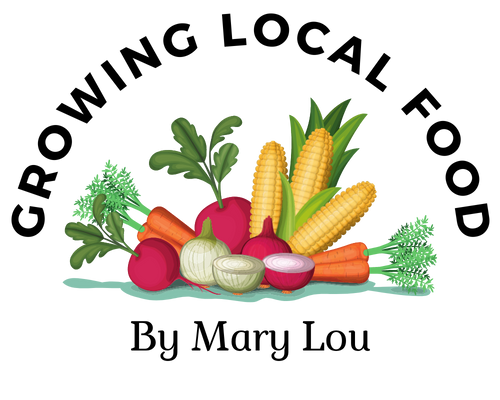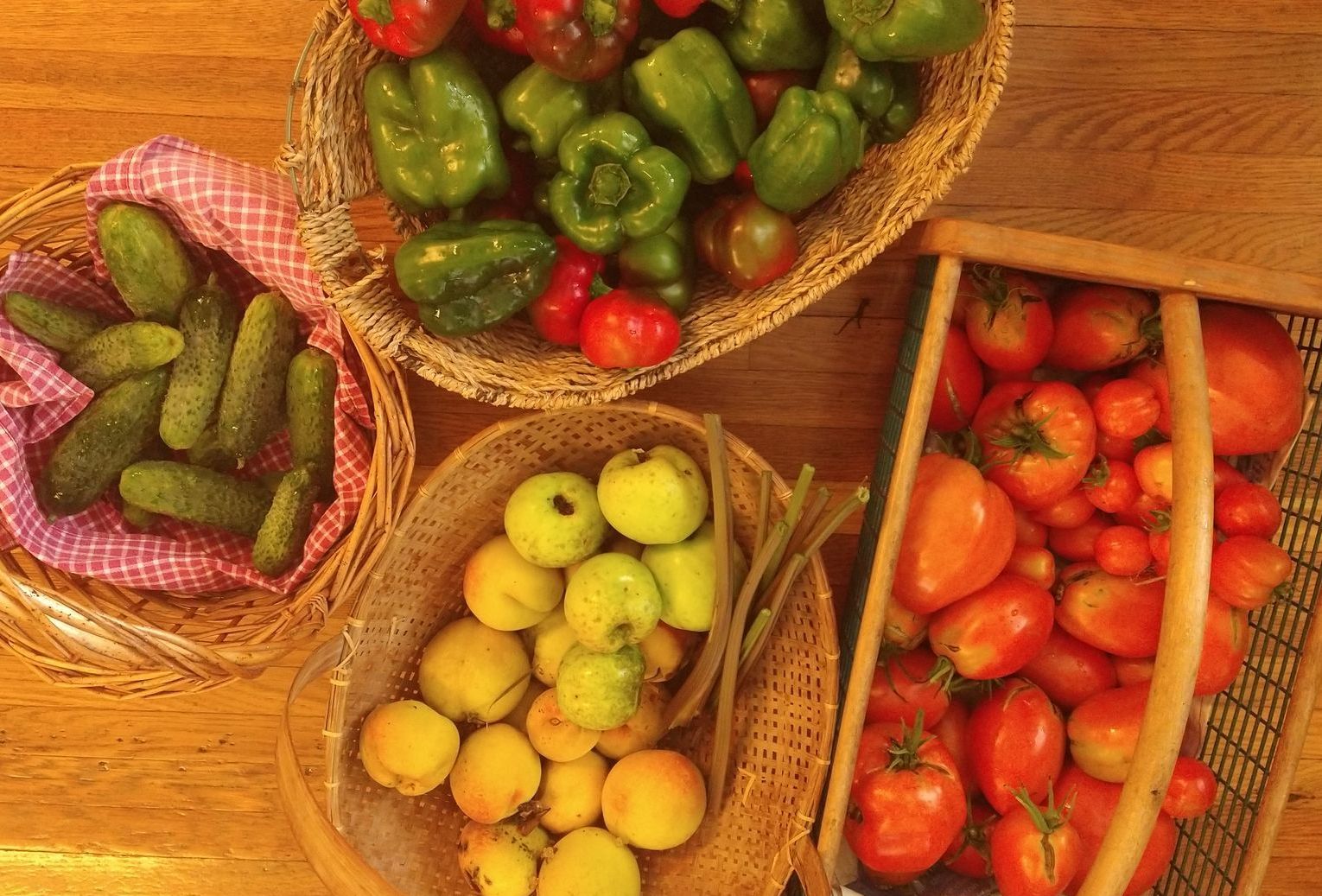How to Make and Use Compost Tea
The Role of Compost Tea
Compost tea is for any of us who would like more compost than what your kitchen scraps provide, because it's a great way to multiply compost.
However, before any of us want to begin another new gardening project, we want to know that it'll be worthwhile. Here's my sale's pitch: I have found that compost tea makes a big difference in improving the health of plants and boosting the nutritional quality of the food we grow. It is part of what is called "regenerative agriculture," because it, along with cover crops, no tilling, rotating plants and using compost, helps to bring the soil food web back to life. This is our goal because we want our food to be nutritious, delicious and disease resistant.
The great thing about compost tea is that you can multiply a small compost pile into an unlimited amount of fertilizer. Unlike the store's "NPK" fertilizers, it contains everything your soil needs to deliver nutrition to your plants and food. You can't use too much, it doesn't smell bad at all, and once you've gathered supplies and equipment, it doesn't take much work or money. For all these reasons, I find compost tea one of the biggest assets to growing healthy plants and nutritious food.
What is Compost Tea?
By definition, compost tea is the water in which compost has been soaked. Compost tea can be made by soaking either compost, or deeply rooted plants, like comfrey or dead nettle, in water for several days. The problem with the "soaking" method is that the millions of living organisms in compost don’t receive oxygen with this method. Without oxygen, the anaerobic or “bad” microbes multiply and can cause plant disease. Besides, it smells pretty bad!
Just as creating good compost requires frequent turning in order to supply oxygen to living organisms, making compost tea requires constant oxygenation to multiply the microbes and arthropods that will create your healthy soil-food web. Oxygenated compost tea is what I'm talking about here.
Equipment Needed:
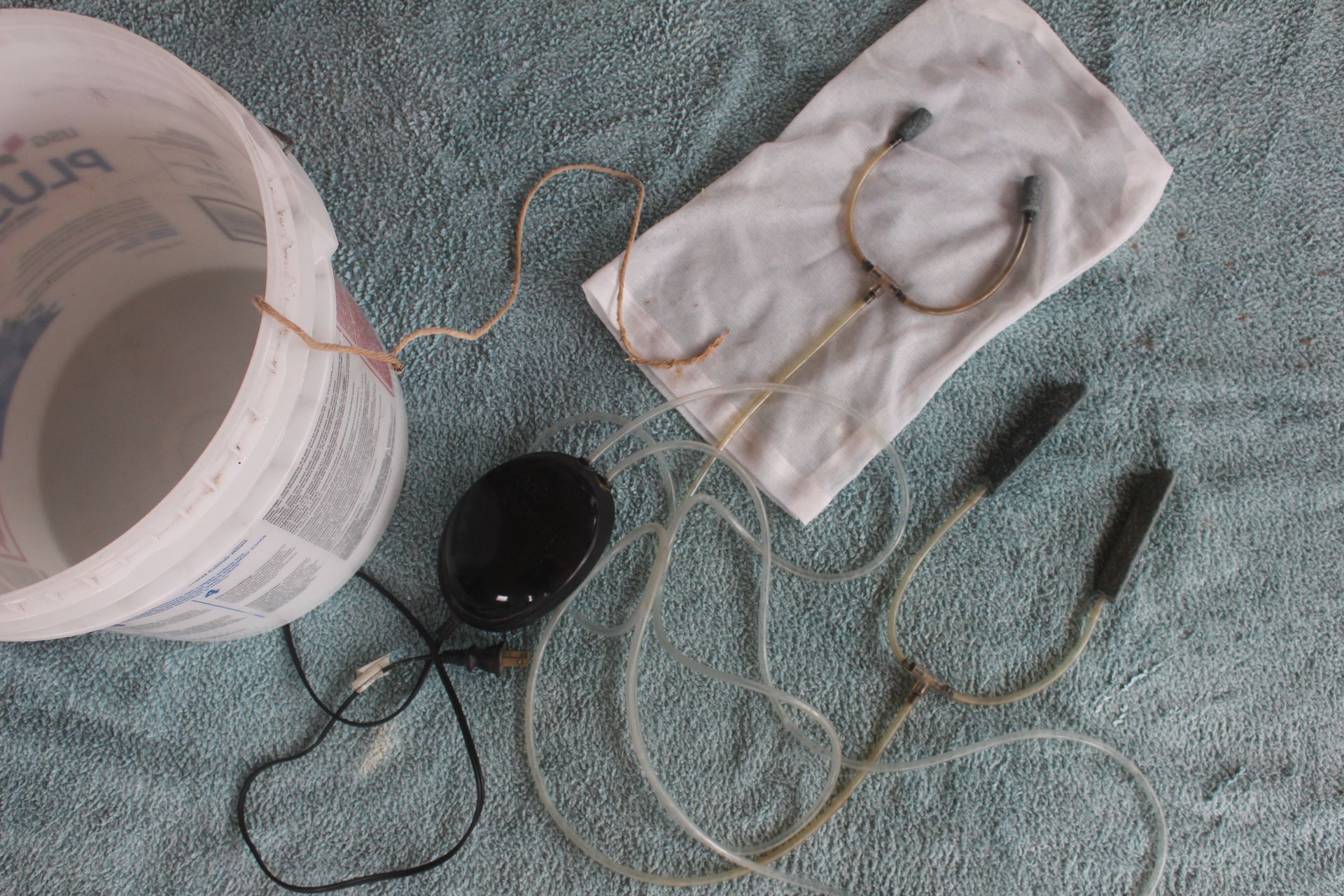
One clean, five-gallon bucket: A lid will eliminate light, but lacking that, you can always place a hand towel over the top of the bucket.
Aquarium air pump and stones: A trip to a pet store will be necessary to purchase these items. Get a pump large enough to run two sets of air stones. A battery aquarium air pump can be purchased for less than twenty dollars and gives the versatility of making compost tea anywhere. I use two larger stones and two smaller ones, as shown above.
Tubing and fittings: You’ll also want about eight feet of air tubing. All this is available with the aquarium equipment at the store, including the "T" fittings that connect the stones to the tubing.
Bag for compost and string:
The bag that contains compost will need to be porous. The most practical I found was a paint-strainer bag from the hardware store, though some people still have panty hose available to use. The bag needs to be large enough to hold the compost with enough additional room above to be tied. About two feet of sturdy string is also needed.
Ingredients for Compost Tea
The recipe I use for compost tea comes from Lowenfels and Lewis’s book, Teaming with Microbes. The recipe for a single batch looks like this:
- 4 cups compost--without any chemicals
- 2 tablespoons uncultured molasses
- 2 tablespoons liquid kelp
- 3 tablespoons liquid fish
- About 4 gallons unchlorinated water (If you don’t have access to unchlorinated water, oxygenate the water for two hours before adding the other ingredients, or use a charcoal filter)
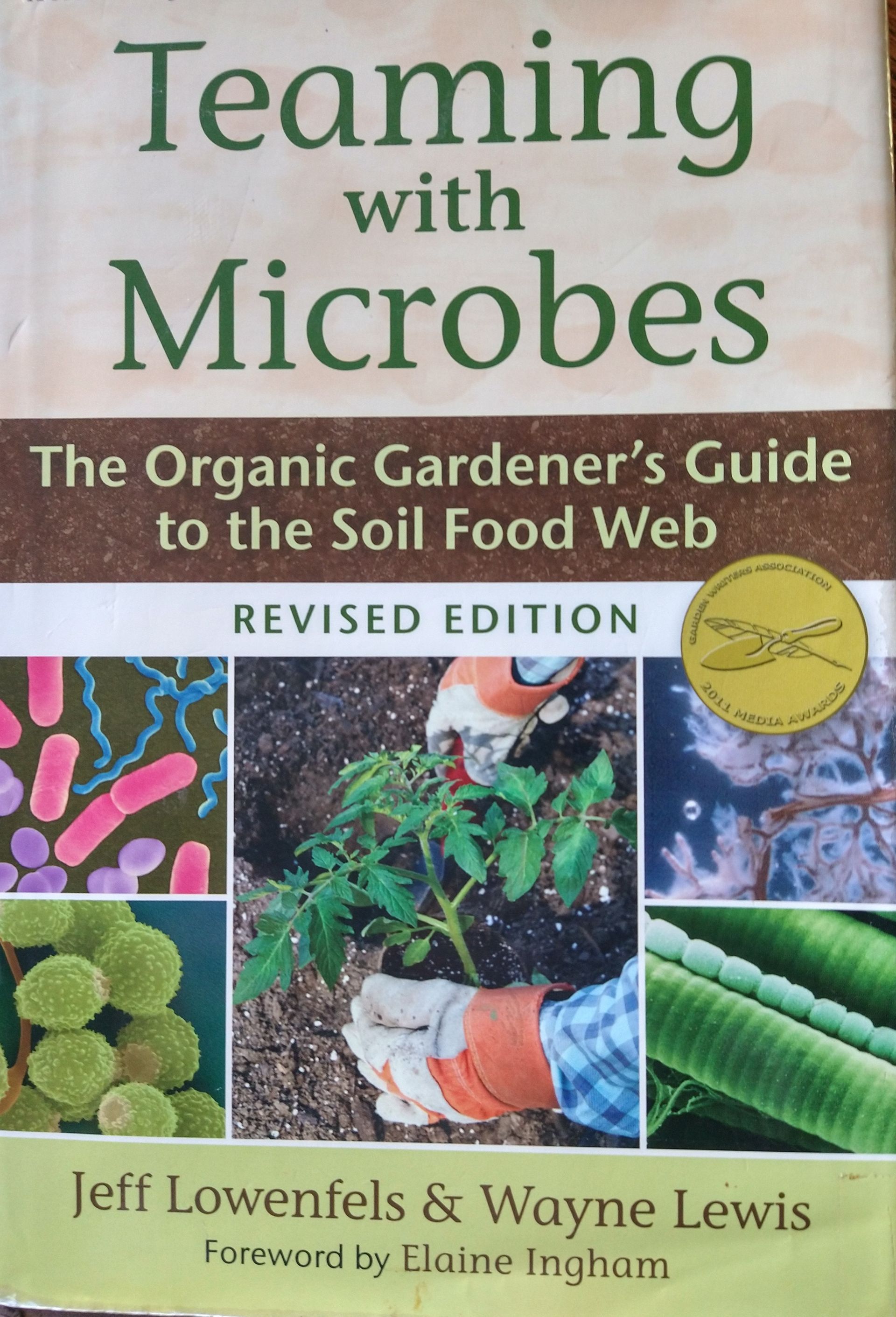
Sources for ingredients:
- Compost can be easily carried from your compost pile in a container such as a quart yogurt container. Be sure to use it shortly after you contain it so it doesn't sit without access to oxygen.
- Molasses can just come from your kitchen cupboard, but if you want to have larger amounts on hand, consider getting non-GMO molasses.
- Kelp can be bought in quantity and saved for several year's use.
- Liquid fish
can also be purchased from Neptune Harvest as
organic.
The role of compost and molasses in this recipe is to multiply the beneficial bacteria in the soil-food web.
The role of kelp and liquid fish is to greatly increase valuable fungi in the soil-food web.
How to Put It All Together:
I think the trickiest part of assembling the equipment and ingredients is not getting water to back up into the tubing and then into the pump. All this equipment will last for years when making multiple batches of compost tea, unless water gets into the pump. But if we attach the two sets of stones to the tubing first, we only need to keep the other ends up when assembling this!
I start by putting the four gallons of water into the five gallon clean bucket. Next, place the two small stones, attached to their tubing, at the bottom of porous bag. This will assure that the microbes in the compost get plenty of air. Put the quart of compost on top of the stones inside the bag and then tie the bag tightly at the top with one end of about two feet of sturdy string. This string suspends the bag with compost and I hold it in place by tying the other end to where the handle is attached to the bucket. Don't let water get into the tubing while you do this.
The two larger stones are then placed at the bottom of the bucket, again keeping the other end of the hose higher. I don't attempt to anchor these stones to the bottom with tape.
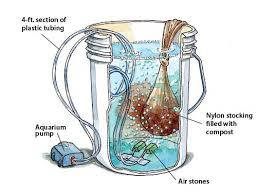
Hints for ease and success:
I'm pretty casual about measuring ingredients when making compost tea. I figure nature doesn't have the same balance of ingredients in the soils of the planet, so if I use "glugs" of molasses from its large container, rather than measuring it in tablespoons, that works. What is needed is enough molasses to feed the microbes for the length of time the tea is being oxygenated.
What I am fastidious about is keeping the pump higher than the water. Therefore, contrary to the sketched diagram, I always place the pump on a higher shelf than the bucket. I've used an indoor sunroom for making tea because there is no bad odor involved. Since moving, I now use an outbuilding that has electricity. A battery operated pump would allow even more flexibility.
To insure maximum success with your compost tea, make it at room temperature and out of direct sunlight. Because we are dealing with living organisms and an aerobic process, bubble oxygen through the mixture from 24 to 36 hours. If you get side-tracked and don’t use it by that time, the microbes will run out of food. Once complete, use the tea within a few hours of completion so the microbe won’t run out of oxygen. We want the microbes to stay moist and to thrive on both the plants and ground, so apply the tea out of direct sunlight—early or late on sunny days is best.
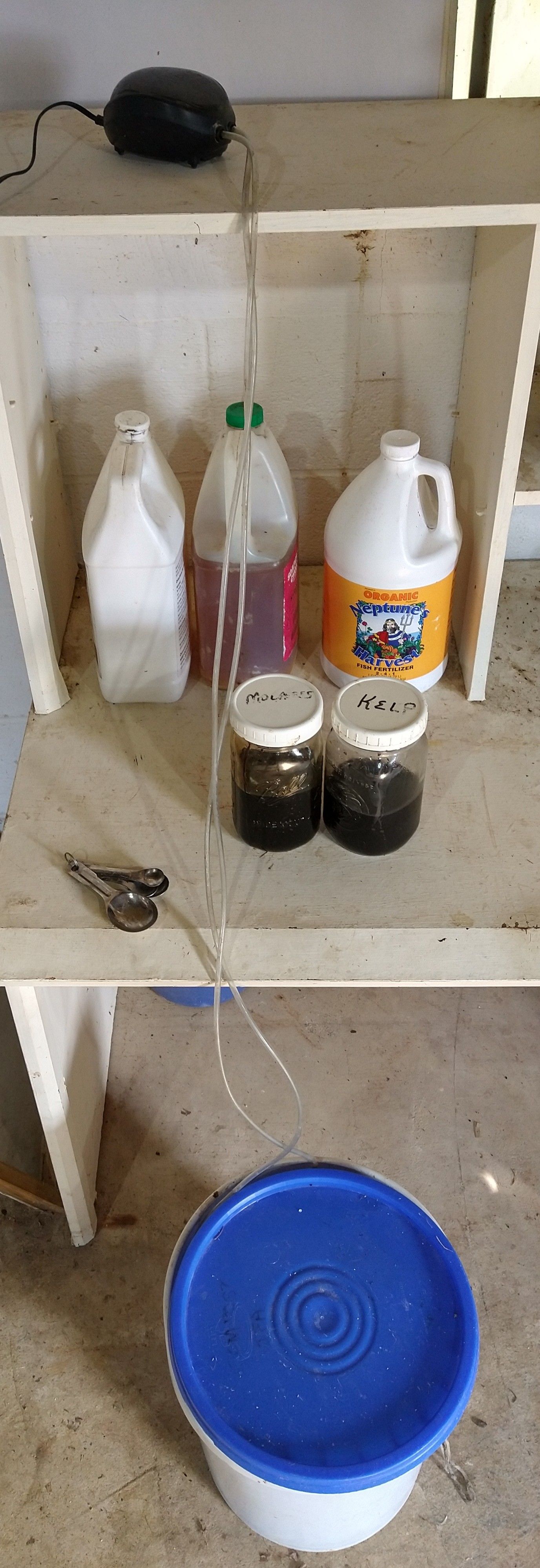
Make Large Quantities:
This five gallon recipe is perfect for a gardener’s use, but a large compost tea set-up can be purchased or made for farm fields. This method rapidly enhances the health of the soil especially when the other methods of regenerating soil are also practiced. These methods include keeping the soil covered with a variety of cover crops, grazing animals, not tilling, and applying compost. Compost tea speeds along this process of enhancing the soil-food web be being able to both feed the foliage and get into the topsoil.
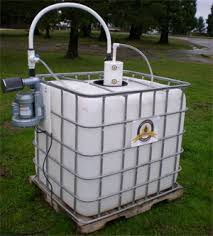
Applying Compost Tea
Applying compost tea to the plants’ leaves creates a barrier that protects them from disease. Dousing the soil with compost tea brings the soil to life which quickly results in an improved exchange of nutrients between plants and the soil microbes. When applying the tea, remember that it contains billions of living organisms, so don’t spray the tea with too much pressure or speed.
The tea can be watered from a sprinkler can, sprayed from a four gallon backpack sprayer or from a tractor-drawn and powered sprayer. Because we used it for both our large vegetable garden and the orchard, we used a combination of these methods.
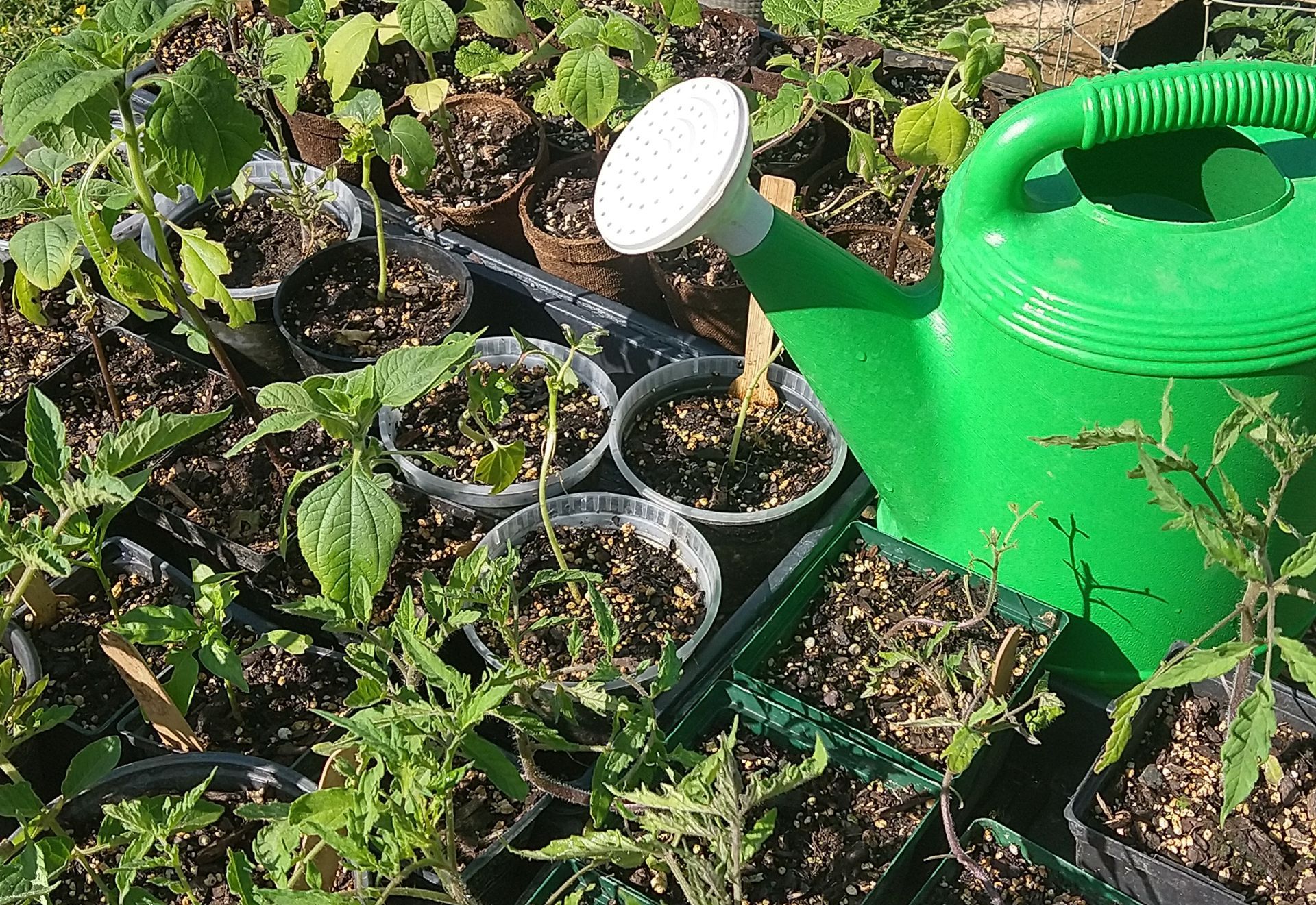
How often to apply compost tea:
Unlike purchased fertilizers, you can not apply too much compost tea. Most fertilizers contain NPK (nitrogen, phosphorus and potassium) so that adding too much will block the plants' uptake of all of the other minerals. But compost tea is just enriching the soil, especially the topsoil that interacts with the plants. It's the quality and aliveness of the topsoil that determines the nutritional content of our produce, and we can't overdo that.
What seasons to use compost tea:
Once our seedlings get their secondary leaves, the seed itself can no longer supply all the nutrition that the new plant needs. That's the time to begin watering with compost tea. When the seedlings have been transplanted to larger containers, they can soak up quite a bit and, for the number of seedlings we grow, I make compost tea almost weekly. Once the plants are in the garden, it usually takes more than the five gallon batch and so I can make compost tea as frequently as every two to three days.
I continue to use compost tea when the garden plants are mature and we are harvesting their produce. What motivates me is that it seems to make the plants so much more disease-resistant. Our heirloom "Heinz" tomato plants routinely got a fungal infection in July, but using compost tea has eliminated this. I'd certainly prefer using a natural fertilizer to a chemical fungicide. Watering the leaves as well as the soil helps to make the difference.
Because compost tea doesn't have a bad odor, don't hesitate to use it to boost the health and growth of all potted plants as well as both perennial and annual flowers, and your lawns and shrubs. Finally, by making your own fertilizer rather than buying it, you're making your home more sustainable!
-
What are the advantages to using compost tea?
When compost tea is sprinkled directly on leaves, it actually can suppress pathogens, like fungi on tomato plants. It also offers the plant and the soil additional nutrients.
-
Can I use tap water to make compost tea?
Well water works fine for compost tea, but if you have municipal water, it will contain chlorine. To not have the chlorine harm your plants, allow it to sit for 24 to 36 hours before making the compost tea.
-
Can I use too much compost tea?
Absolutely not. That would be like having too much good soil for your plants. Use it as often as you have the time to make it. I try to get at least three batches made and distributed on the garden plants by the early summer.
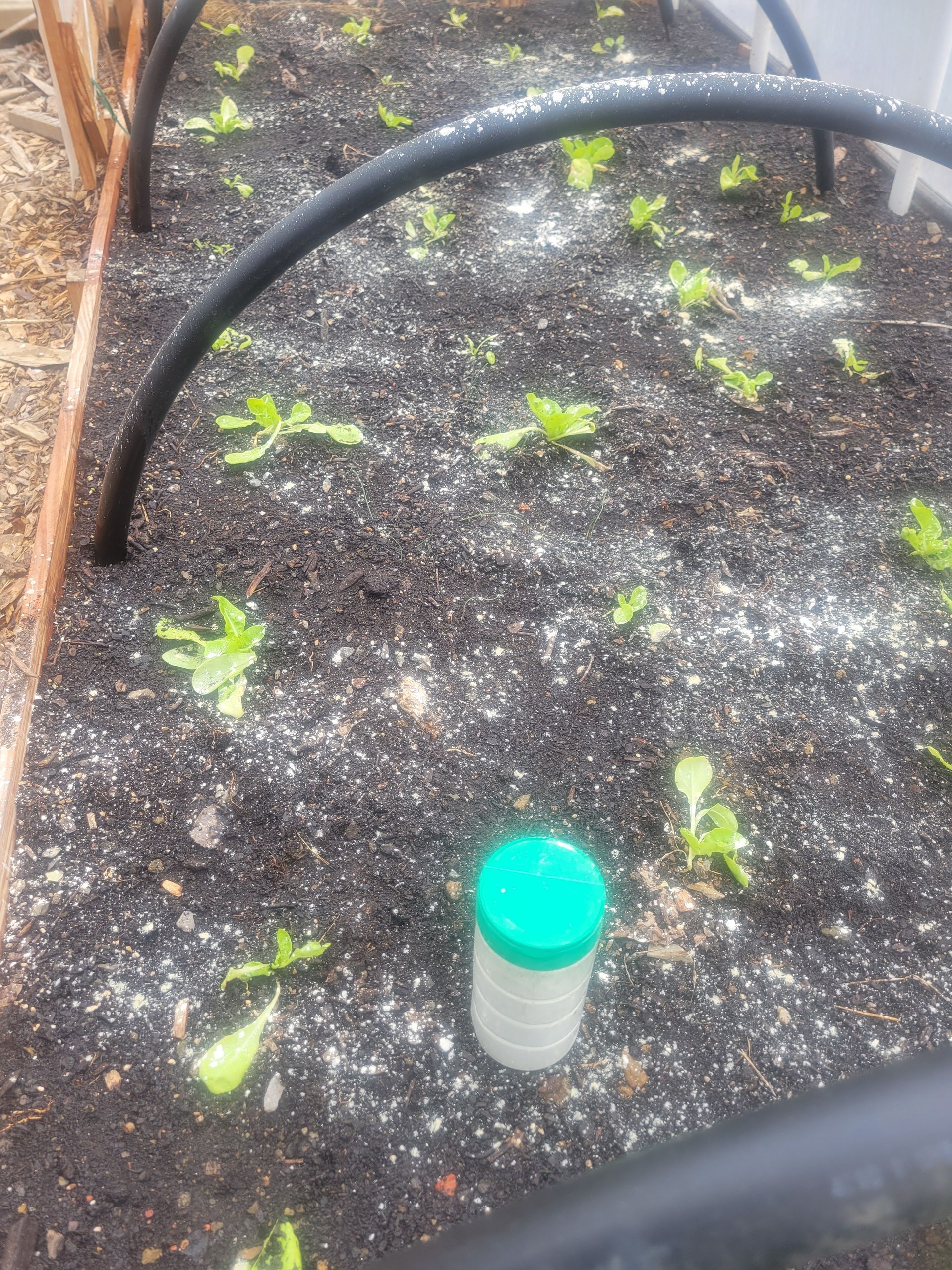
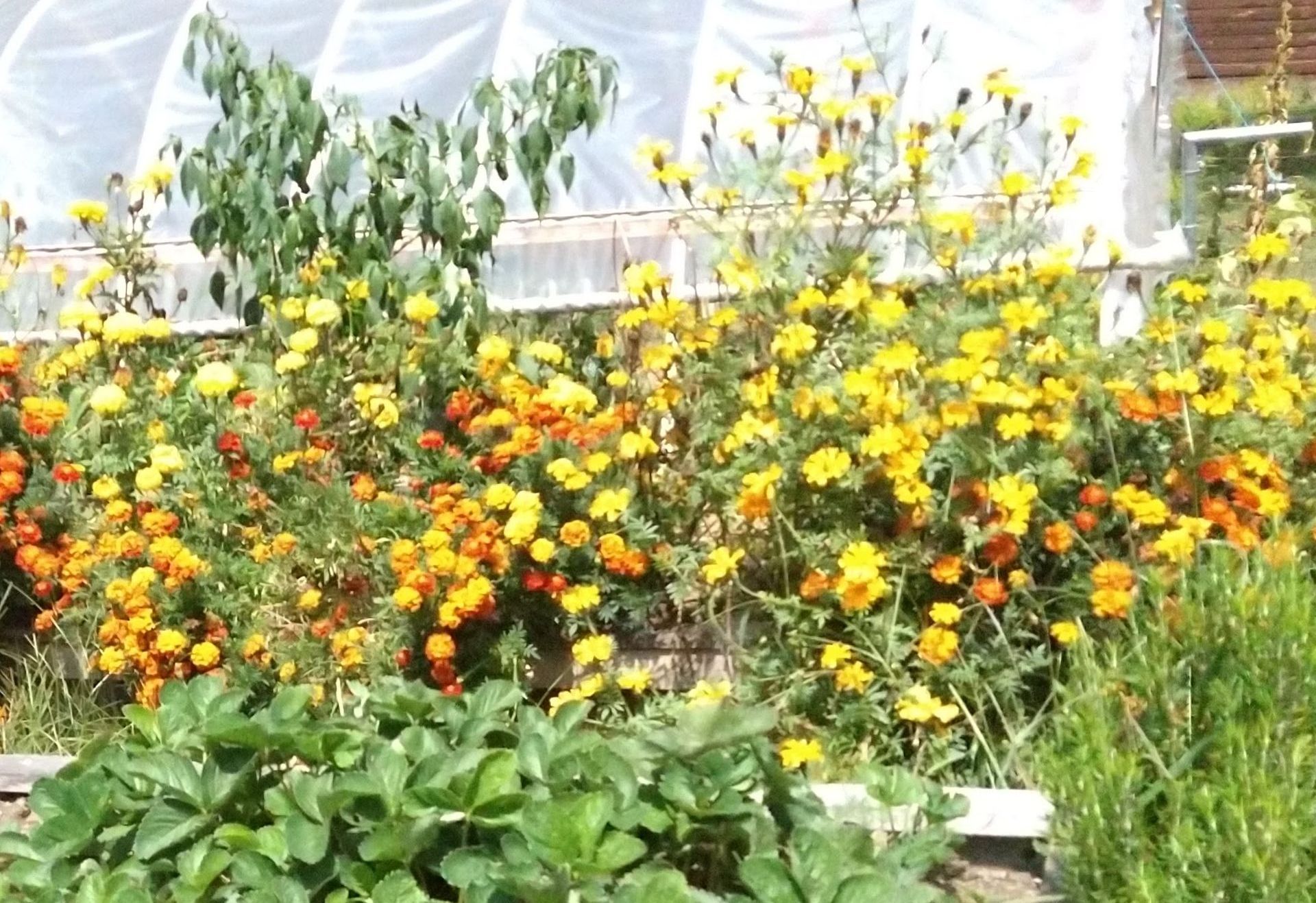
Mary Lou
mlgrowinglocalfood@gmail.com
